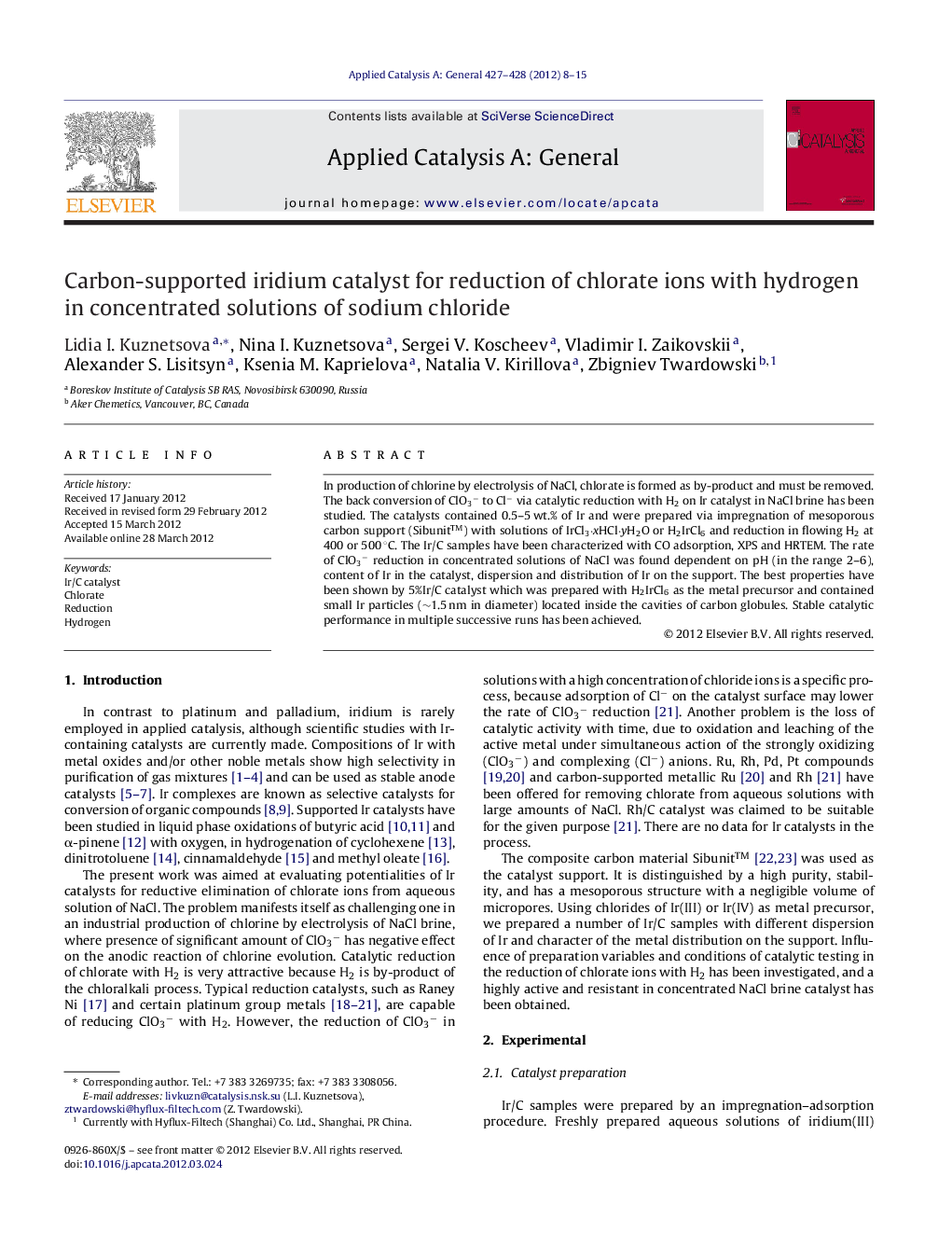| Article ID | Journal | Published Year | Pages | File Type |
|---|---|---|---|---|
| 40949 | Applied Catalysis A: General | 2012 | 8 Pages |
In production of chlorine by electrolysis of NaCl, chlorate is formed as by-product and must be removed. The back conversion of ClO3− to Cl− via catalytic reduction with H2 on Ir catalyst in NaCl brine has been studied. The catalysts contained 0.5–5 wt.% of Ir and were prepared via impregnation of mesoporous carbon support (Sibunit™) with solutions of IrCl3·xHCl·yH2O or H2IrCl6 and reduction in flowing H2 at 400 or 500 °C. The Ir/C samples have been characterized with CO adsorption, XPS and HRTEM. The rate of ClO3− reduction in concentrated solutions of NaCl was found dependent on pH (in the range 2–6), content of Ir in the catalyst, dispersion and distribution of Ir on the support. The best properties have been shown by 5%Ir/C catalyst which was prepared with H2IrCl6 as the metal precursor and contained small Ir particles (∼1.5 nm in diameter) located inside the cavities of carbon globules. Stable catalytic performance in multiple successive runs has been achieved.
Graphical abstractFigure optionsDownload full-size imageDownload high-quality image (239 K)Download as PowerPoint slideHighlights► Reductive elimination of chlorate in NaCl brine. ► Active and stable catalyst Ir nanoparticles on carbon Sibunit™. ► Strong impact from the nature of metal precursor.
